First Drive: 2017 Honda Civic Type R
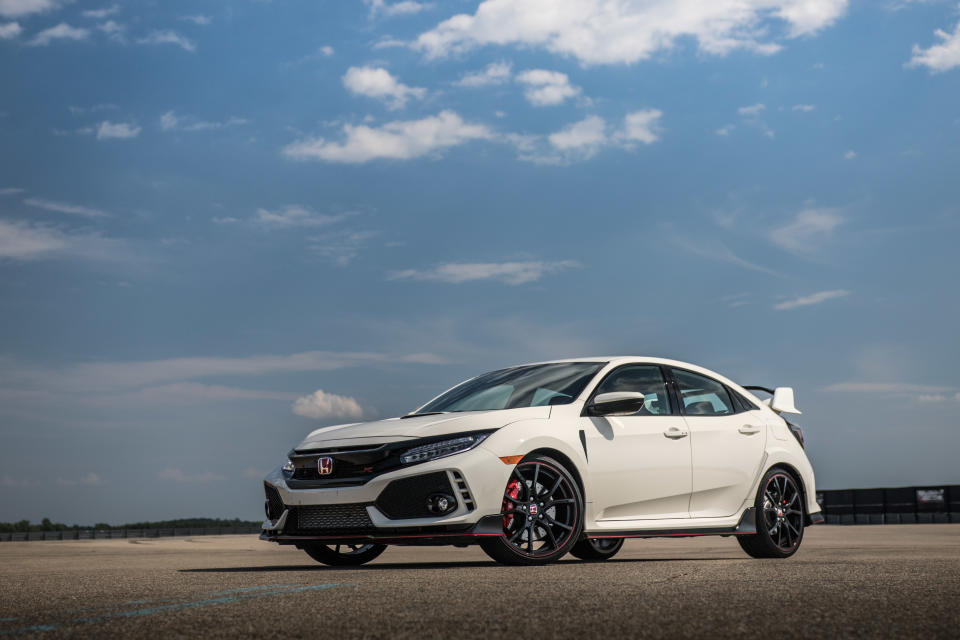
You have to wonder whether Soichiro Honda, founder of the company that bears his name, would cackle in delight, or shake his head in dismay. After all, almost every quick Honda that bears the fingerprints of his genius has an element of delicacy about it. The new Type R is not delicate. It is visual dubstep.
Mind you, just take a peek at what the new Camry looks like. They have changed what “it” is, and now what's “it” seems weird and scary to me. Abe Simpson warned us this would happen.
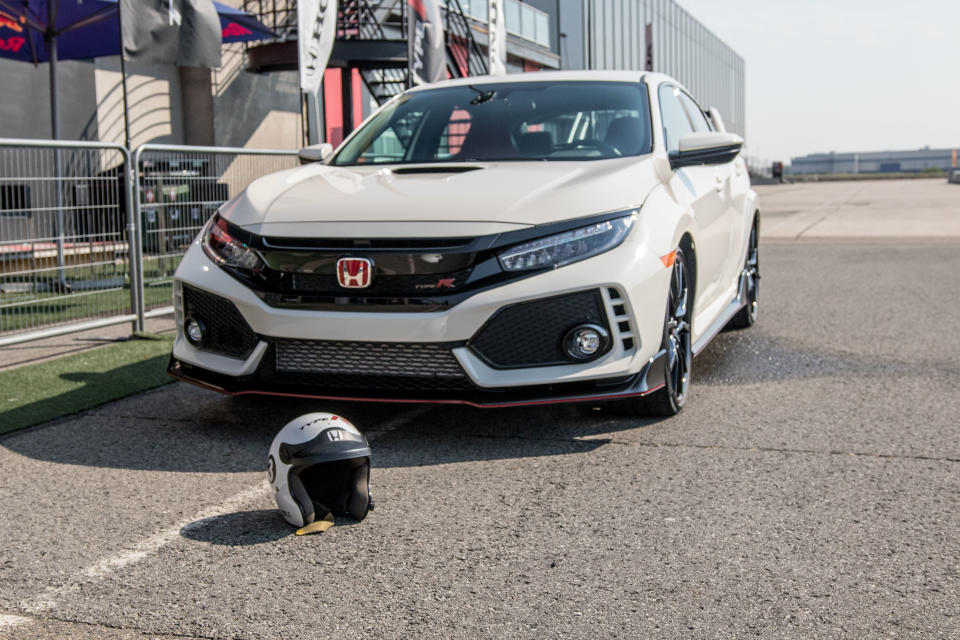
But take heart: Every element on the outside of this Dragonball-Z-haircut of a car has genuine functionality. Take the scoop mounted in the new aluminum hood. Those of you who haven't already poked your eyes out on one of the Type R's pointier bits will have noticed that the lower valence of the car is filled with a front-mounted intercooler. Why the Subie-style hood scoop? Do-nothing eyeball drama, like the hood on a TRD Tacoma pickup?
Hardly. The scoop channels some air for engine bay cooling but also feeds underhood ducting to the functional fender-side vents, a trick to make the flanks of the Type R slipperier at speed. Channels on the front and side aero-kit kick air up and over the wheels to create a curtain, screening the turbulence of spinning spokes. The near-comical rear spoiler is aided by pointy little outcroppings at the rear of the roof, which break up airflow to generate real downforce. Honda claims an overall effect of negative lift for the Type R at speed.
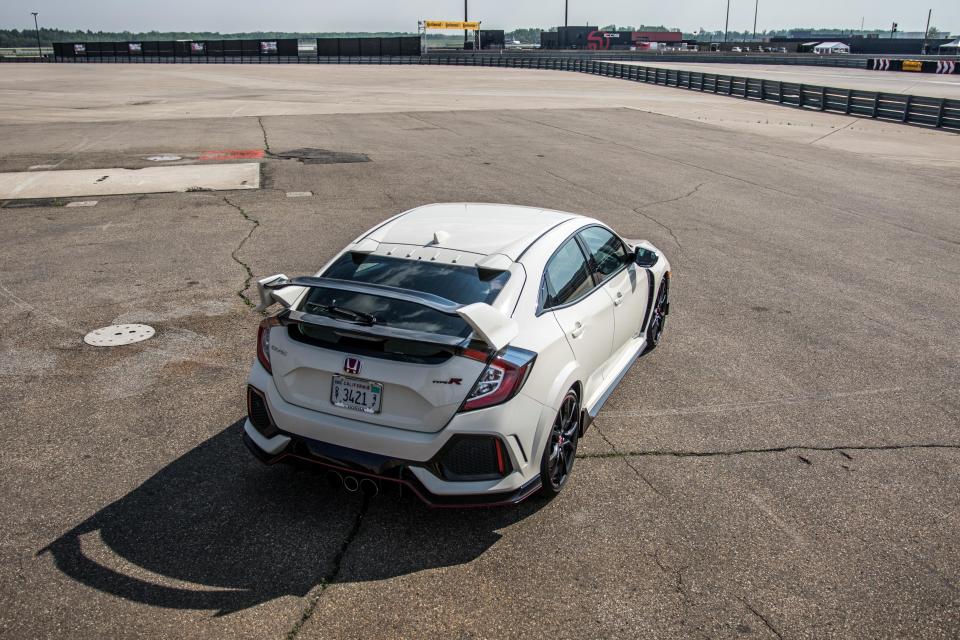
They don't claim an overall effect of looking completely insane, but that too is there. French-speaking Canada has a stronger car culture than the rest of the country - echoes of Gilles Villeneuve - and Montreal in particular is obsessed with street fashion. The Type R snapped so many necks, there was probably an uptick in wait times for local chiropractors.
Inside, the mono-spec Type R gets most of its gear from the Touring grade Civic, including a standard seven-inch touchscreen display with satellite navigation, Android Auto, and Apple Carplay. The Civic Si's instrument cluster options also carry over, with a performance display that can show metrics on boost, lap times, a g-meter, or a shift-light indicator.
More immediately noticeable are the heavily bolstered front seats, which are unique to the R. As a pair, they're 12 lbs lighter than the standard hatchback seats, but the main benefit is a huge amount of bolstering. You do, however, lose the Si's seat-heating functions.
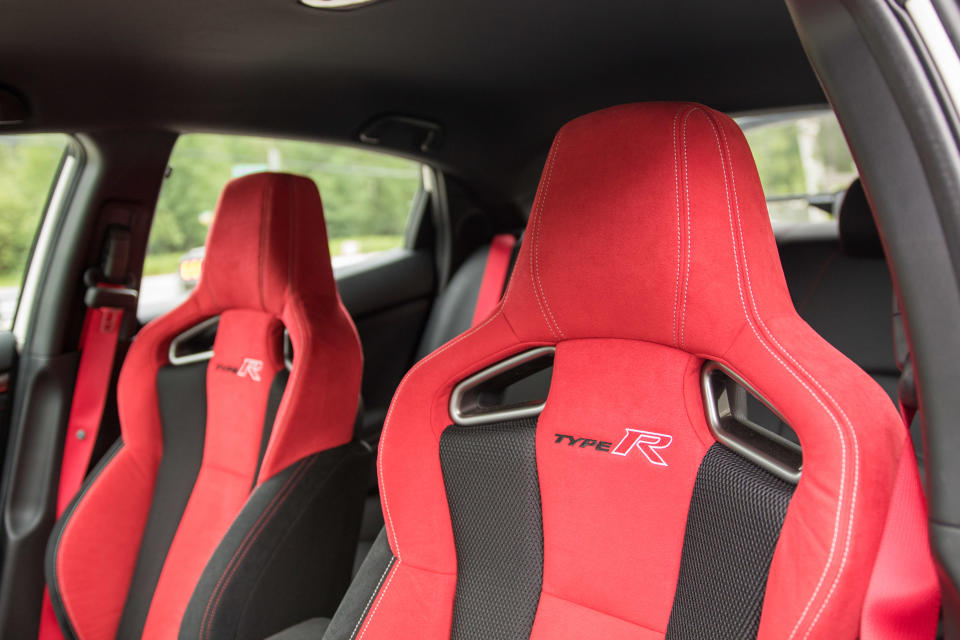
At 80+ degrees on the track at the ICAR circuit in Mirabel, Quebec, heated seats were not a consideration. Indeed, as temperatures and speed climbed, sweaty palms made the leather D-shaped steering wheel and spherical metal shift knob feel slippery. Not slippery in any way: the Type R itself.
Before we begin, there is at least one person in the audience hurriedly scrolling just to post the comment, “front wheel drive sucks.” I hereby cordially invite you to go drift your Mustang into a lamppost outside your local cars and coffee.
Front-wheel-drive is a packaging compromise adopted by compact cars, stretching back to the Mini Cooper and further. While it would not be ideal to build, say, a front-wheel-drive Corvette, a puller can still be engineered to be extremely quick. Just pull up a few videos from the Goodwood Revival, and you can watch the aforementioned Minis punching far above their weight class.
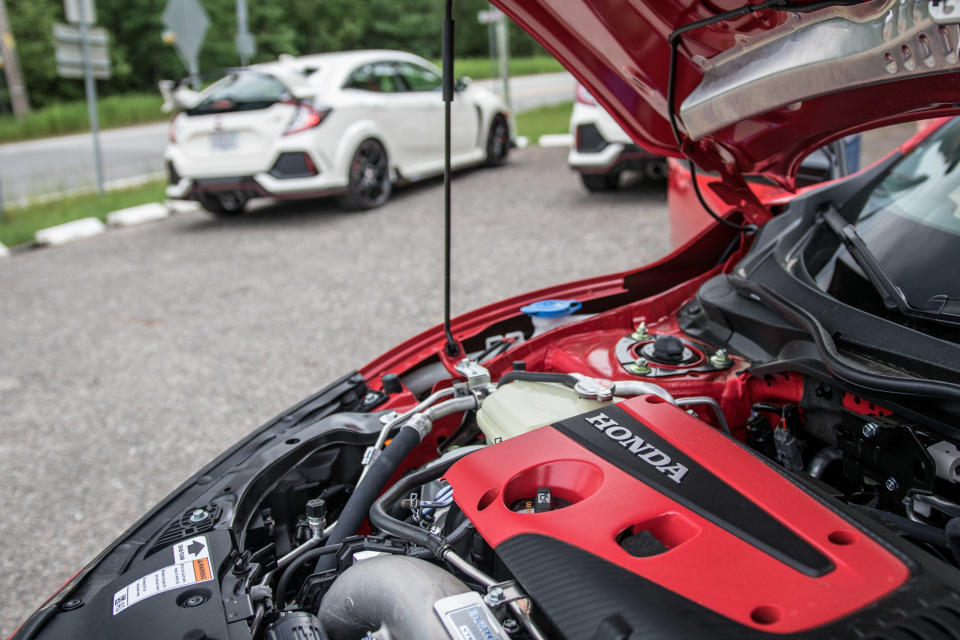
First, the Type R brings the boost with an engine that feels worthy of the badge. A 2.0-liter, direct-injected four-cylinder, it features a liquid-cooled intake manifold, forged connecting rods, sodium-filled exhaust valves, oil jets for piston cooling, and dished piston crowns for a more effective combustion cycle. It also gets both turbocharged boost and i-VTEC.
Every Honda fanboy in the room just chirped their tires in excitement. Too soon, junior, I haven't even got to the good part. While the Type R's output of 306 hp at 6500 rpm and 295 lb-ft of torque from 2500-4500 rpm seems impressive enough, it's not the whole story.
For one thing, Honda might be sandbagging a little here. Just as the Accord V6 coupe puts down wheel horsepower figures suspiciously close to the claimed crank output, the Type R feels far quicker than the specs would lead you to believe. Perhaps part of the impressive thrust is the reduced drivetrain loss inherent to a front-wheel-drive setup, as compared to an all-wheel-drive system. Whatever the case, the Type R feels like it's getting considerably more power to the ground than either the STI or the Golf R.
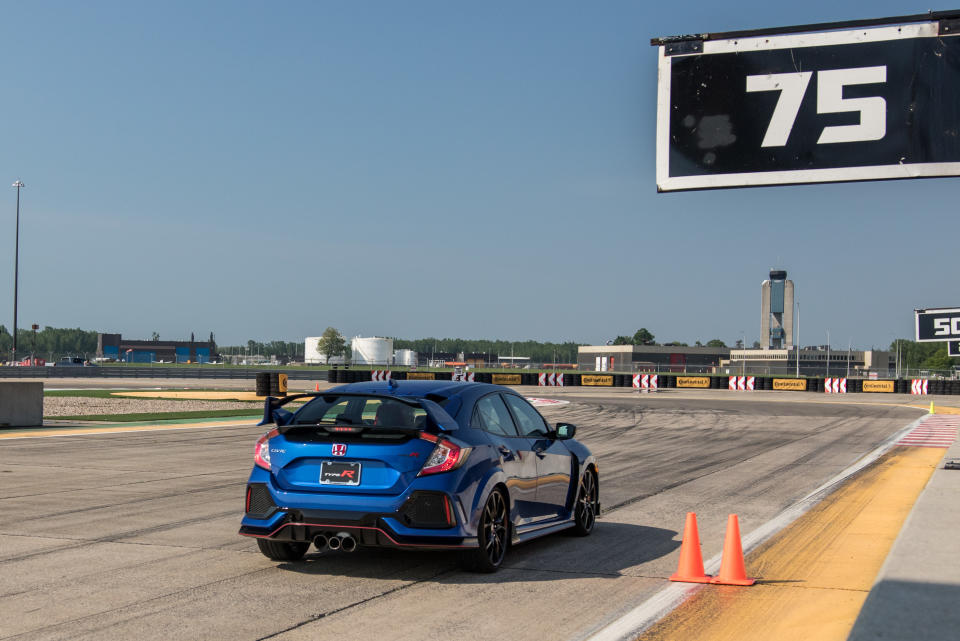
And I do mean getting it to the ground. The Type R is equipped with a helical limited-slip differential, but that's to be expected. Tweaks to the R-secific twin-axis front strut setup reduce torque steer even further, with only mild tugs at the steering wheel if you go full throttle at low speeds with the steering wheel fully cranked. Otherwise, even through some of ICAR's tight, second-gear corners, the Type R doesn't punish you for getting on the throttle early once you hit the apex.
Slow-in, fast-out works best for the Type R (and practically everything else), but turn-in is very sharp. Where an STI might need a touch of trail-braking, and perhaps even a dab of left-foot to bite, the Type R needs only a lift off the throttle and a little patience. Agile Handling Assist, Honda's brake-based torque vectoring system, is relatively invisible. Fast fourth-gear corners are a revelation, as the car rotates easily, then the low-end torque pulls until the variable valve timing kicks in to give you that little rev reward at the top of the tachometer. Redline is at 7000 rpm.
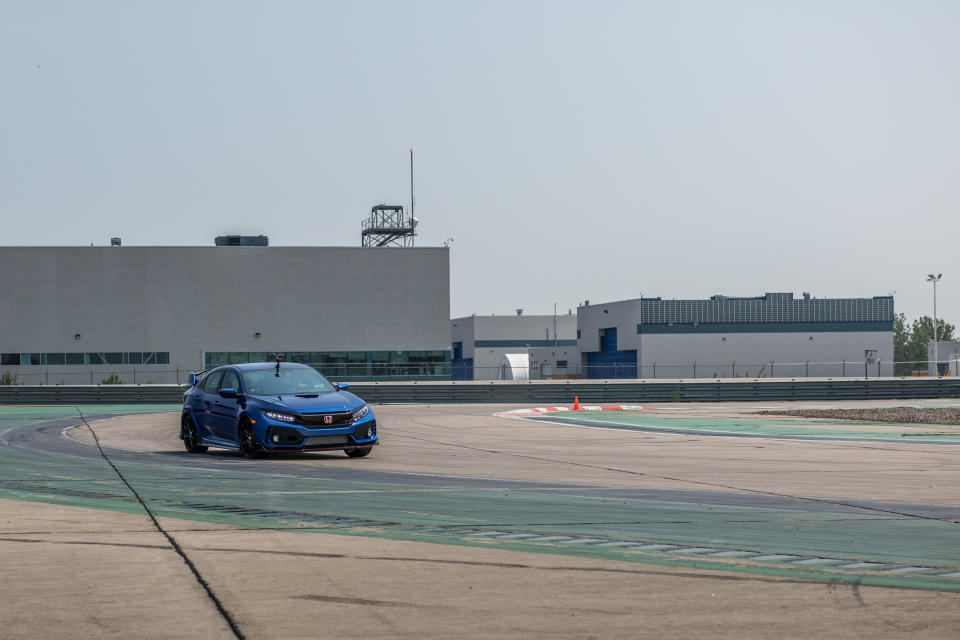
The three-level drive mode system builds on the Si's two-mode setup, with an R+ level that firms up damping for track work. The system is more complex than that of the Si, with three g-sensors and a stroke sensor for each strut. R+ mode also firms up steering weight, and traction and stability control may be switched off. The only other Honda product that lets you completely operate without a safety net is the NSX.
The brakes are worth a quick mention too. At 3113 lbs, the Type R is not the svelte little EK-generation Civic hatch so many of us aspired to own. Four-piston Brembos are fitted up front, with a single-piston rear brake, with rotor sizes of 13.8” and 12.0” respectively. Both represent an increase over the Si, and repeated full-ABS fourth-to-second-gear braking around ICAR didn't seem to produce noticeable fade.
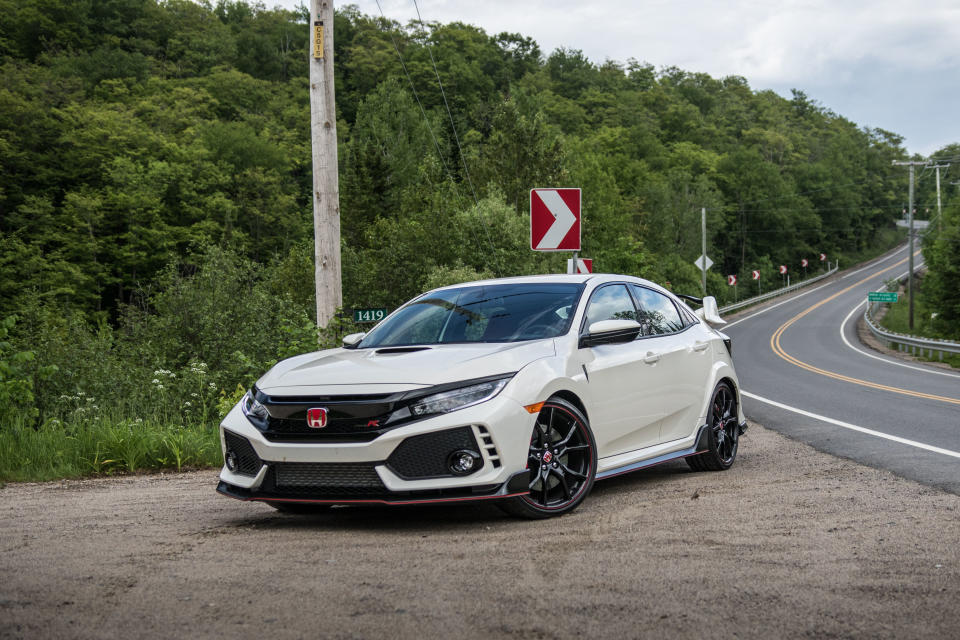
Out on the street, the amount of effort Honda put in to making their record-setting Nürburgring run of 7:43.8 becomes usefully apparent. It's worth noting that the Nürburgring-record car wore Michelin Pilot Sports, while the production car we get is shod in 245-series Continental Sport Contact 6s. Regardless, real world grip in any situation is incredible.
The Type R's steering ratio varies between 14.9:1 on-center and 11.7:1 at full lock, with 2.11 turns lock-to-lock. Over rough roads at speed, this enhanced the feeling of grip, but still allowed for quick adjustment in mid-corner. Steering feel is inferior to, say, the hydraulic system in the current STI, but hit a rut in the Subaru and the steering wheel will try to rip itself from your hands. The Type R proved tractable over rural Quebec's broken and winding pavement at lively speeds.
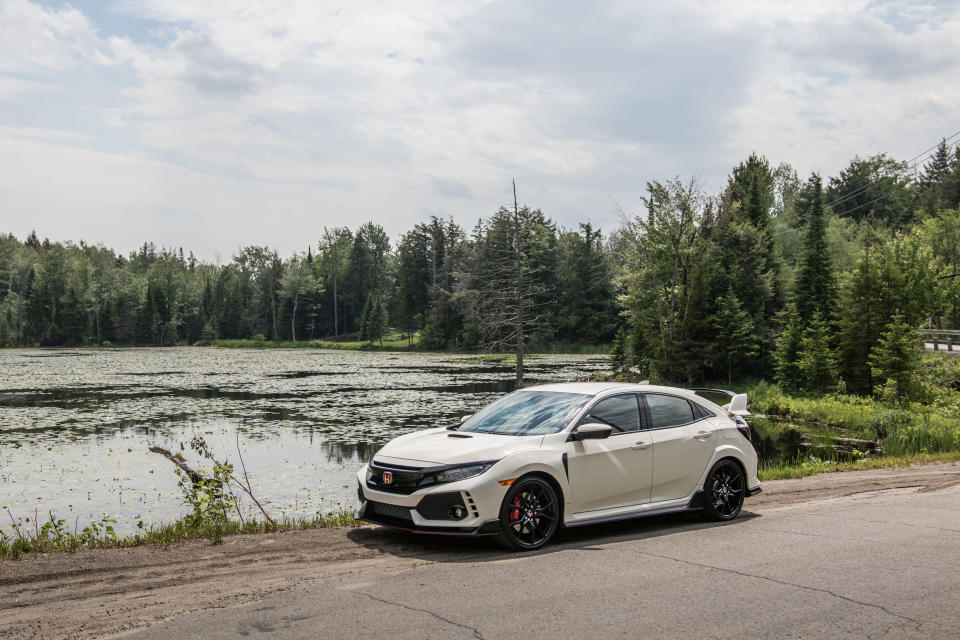
The Civic Type R arrives at just the right time and at just the right price. At $33,900, it slightly undercuts the competition, and when the equipment loadout is taken into consideration, it's significantly less expensive. The R might find a Focus RS a serious challenge on a road course - that car is the real deal - but the gap is close enough for driver skill to make the difference. Further, the Type R is more comfortable in the real world than either the RS or a Subaru WRX STI.
It's also genuinely practical, with a 25.7-cubic-foot hatchback trunk and 60/40 split-folding rear seats. Even the fuel economy is livable, at an EPA rated 22 mpg city, 28 highway. The STI's aging EJ-series flat-four will struggle to hit that city number on the freeway.
As for how the Type R stacks up next to a jack-of-all-trades machine like the Volkswagen GTI or Golf R, let's be real. The difference between the VW and the Honda is the difference between buying a business suit and cosplaying as a character from Final Fantasy. There probably won't be much overlap.
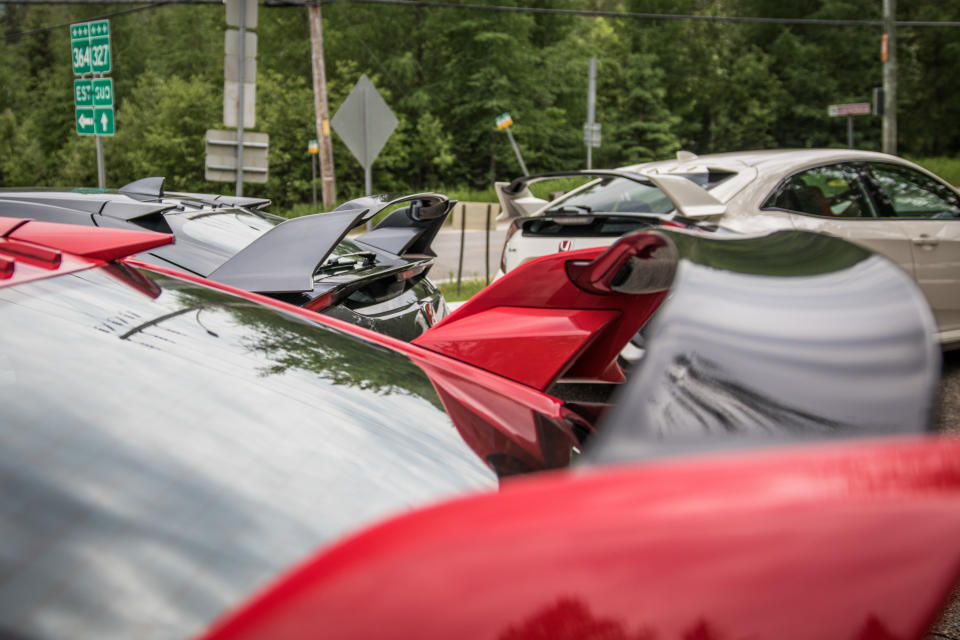
What would Soichiro think? Well, consider that Dr. Honda was equal parts genius and madman. He once sold his company to buy distillation equipment and spent an entire year getting hammered with his friends. During the production of the Coupe 9, he reversed the assembly line more than once, because he kept thinking of additional features to add.
And he had a lifelong love of speed. The Type R looks completely friggin' nuts, but it delivers. Soichiro would probably laugh.
You Might Also Like

 Yahoo Autos
Yahoo Autos 